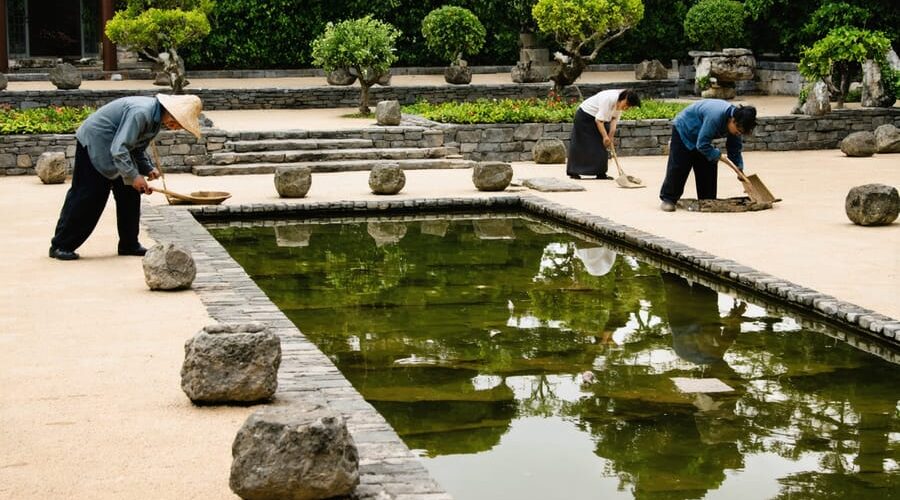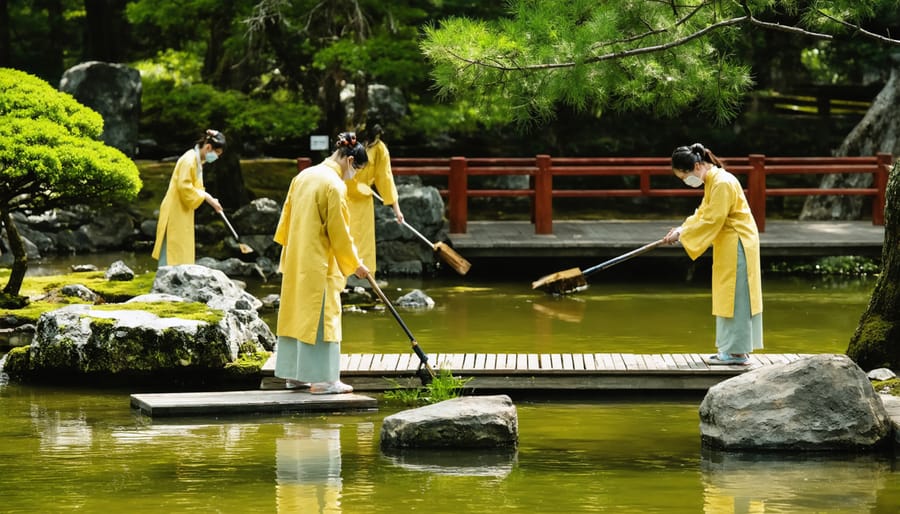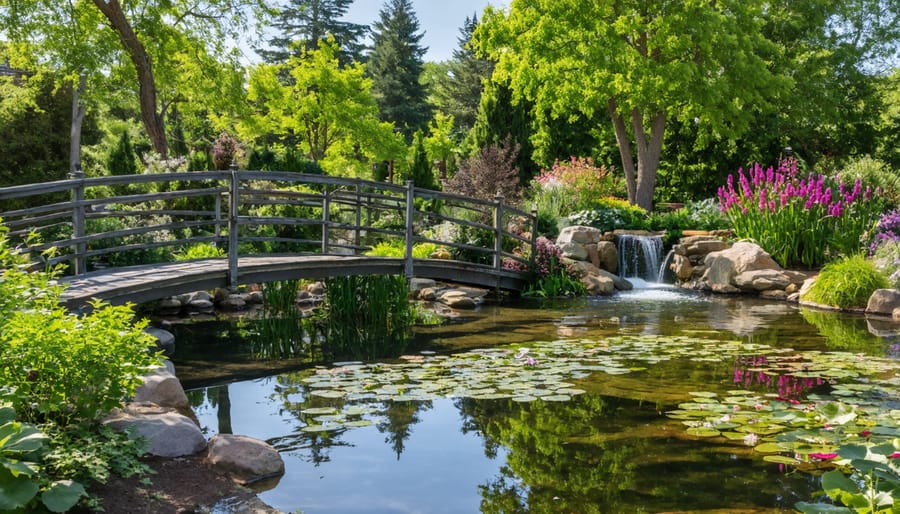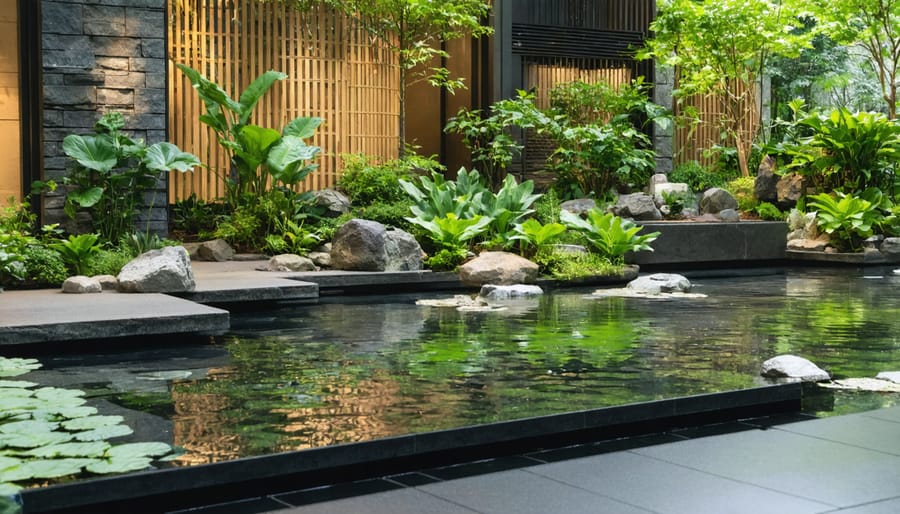
How Water Gardens Shaped Traditional Gender Roles (And Why It Matters Today)
Traditional gender roles have profoundly shaped societies across cultures and centuries, influencing everything from family dynamics to economic systems. These deeply ingrained expectations, while rooted in historical water garden traditions and broader social customs, typically assigned men as primary breadwinners and protectors, while women were designated as caregivers and homemakers. Throughout history, these roles created distinct spheres of influence: men dominated public life, politics, and commerce, while women maintained domestic responsibilities and child-rearing duties.
Understanding traditional gender roles remains crucial today, not just as a historical lens, but as a framework for examining how modern societies continue to evolve. These established patterns have influenced everything from workplace dynamics to personal relationships, though many cultures are now actively challenging and redefining these conventional expectations. By examining these historical norms, we gain valuable insights into current gender discussions and the ongoing journey toward equality and individual choice in social roles.
Historical Division of Water Garden Labor
Men’s Traditional Roles
In traditional societies, men typically handled the physically demanding aspects of construction and maintenance tasks. Heavy construction work, such as building foundations, erecting structures, and installing large water features, fell primarily under male responsibility. Men would take charge of digging ponds, moving heavy stones, and managing structural elements that required significant physical strength.
These roles often extended to maintaining and repairing essential infrastructure. Men would handle tasks like fixing roofs, building retaining walls, and installing irrigation systems. The physical nature of these jobs, combined with the tools and equipment typically associated with them, made them traditionally male-dominated activities.
Pond construction, in particular, was considered men’s work due to the intensive labor required. This included operating heavy machinery, excavating large volumes of soil, and positioning heavy liner materials. Men were also responsible for installing filtration systems, pumps, and other mechanical components that kept water features functioning properly.
Beyond construction, men traditionally managed ongoing maintenance tasks that required physical strength or technical expertise, such as dredging ponds, repairing leaks, and maintaining water circulation systems.
Women’s Traditional Roles
Historically, women played vital roles in maintaining and nurturing water gardens, drawing on their traditional connections to nurturing and cultivation. Their responsibilities often centered around the delicate task of tending to aquatic plants, selecting and arranging flora for optimal aesthetic appeal, and ensuring the daily upkeep of these serene spaces.
Women were typically tasked with planting and maintaining water lilies, lotus flowers, and marginal plants, carefully considering factors like bloom times and color combinations. They would often spend early mornings removing dead leaves, trimming overgrown plants, and ensuring proper water levels. This meticulous attention to detail helped create harmonious garden spaces that provided both beauty and tranquility.
Beyond plant care, women traditionally managed the decorative aspects of water gardens, incorporating elements like stones, statuary, and creative arrangements that enhanced the overall visual appeal. They passed down knowledge about seasonal care, plant propagation, and water quality management through generations, establishing a rich legacy of water gardening expertise that continues to influence modern practices.
Cultural Influences on Water Garden Gender Roles
Eastern Traditions
In Eastern cultures, particularly Japan and China, Japanese water garden traditions historically reflected distinct gender roles that influenced garden design and maintenance. Women were often responsible for the aesthetic elements, such as arranging floating flowers and maintaining the delicate balance of ornamental plants around the water’s edge. They also performed daily rituals like feeding koi fish and cleaning water features.
Men traditionally handled the physical construction aspects, including pond excavation, stone placement, and water system installation. They were also responsible for the structural maintenance of bridges and pathways. This division wasn’t merely about physical capability – it reflected deeper cultural beliefs about harmony and balance between masculine and feminine energies.
In Chinese gardens, similar patterns emerged, with women tending to focus on the artistic elements like selecting and positioning decorative features, while men managed the technical aspects of water flow and filtration. However, both cultures emphasized the importance of cooperation between these roles, viewing the garden as a complete ecosystem where masculine and feminine elements needed to work together.
Today, while these traditional roles have evolved significantly, many garden enthusiasts still draw inspiration from these historical approaches, adapting them to create balanced and harmonious water features that honor both practical and aesthetic considerations.

Western Practices
In Western societies, particularly during the Victorian era through the mid-20th century, water gardening roles were often divided along gender lines. Men typically handled the “heavy” work of pond construction, including digging, stone placement, and pump installation. They were also responsible for maintaining mechanical equipment and managing larger water features on estates.
Women, on the other hand, were traditionally associated with the more decorative and nurturing aspects of water gardening. They often took charge of selecting and arranging water plants, caring for delicate floating species, and maintaining smaller ornamental features like container water gardens. The cultivation of water lilies, in particular, was considered a “feminine” pursuit, with many notable female horticulturists contributing to the development of new varieties.
This division extended to professional roles as well. Male landscape architects typically designed large-scale water features for public spaces and estates, while women were more commonly involved in residential garden design and botanical illustration of aquatic plants.
However, these gender distinctions began to blur significantly during the mid-20th century. The rise of suburban home ownership and the DIY movement encouraged both men and women to participate in all aspects of water gardening. Today, while some of these traditional roles may still influence personal preferences, water gardening is widely recognized as an activity equally suited to all gardening enthusiasts, regardless of gender.

Modern Perspectives on Gender Roles in Water Gardening
Breaking Traditional Boundaries
Today’s gardeners are challenging long-held gender stereotypes, creating a more inclusive and diverse gardening community. Where once heavy landscaping and modern water garden design were considered primarily male domains, and flower arranging was seen as a feminine pursuit, these boundaries are rapidly dissolving.
Women are increasingly taking on roles in hardscaping, pond construction, and maintenance, bringing fresh perspectives to technical aspects of water gardening. Similarly, men are embracing the artistic elements of garden design, including delicate plant selection and aesthetic arrangement. This shift reflects broader societal changes and recognition that gardening skills aren’t gender-specific.
Community gardens and gardening clubs are leading this transformation, creating spaces where expertise and passion matter more than traditional gender roles. Social media has also played a crucial role, showcasing diverse gardeners and their achievements, inspiring others to pursue their interests regardless of gender expectations. This evolution in gardening culture demonstrates how breaking free from conventional roles enriches the entire community and leads to more creative, innovative outdoor spaces.

Benefits of Inclusive Practices
Moving beyond traditional gender roles in water gardening opens up exciting possibilities for everyone involved. When all family members participate equally, gardens become more diverse and creative, incorporating different perspectives and ideas. Couples working together can share the physical demands of pond maintenance, making tasks like lifting heavy rocks or cleaning filters more manageable and enjoyable.
Breaking free from gender-specific roles allows individuals to discover new interests and develop varied skills. Men might find joy in selecting delicate water lilies and arranging floating plants, while women might excel at designing complex filtration systems or building rock formations. Children growing up in this inclusive environment learn that gardening skills aren’t limited by gender, encouraging them to explore their interests freely.
This collaborative approach often results in better-maintained gardens as different strengths and viewpoints combine to solve problems creatively. It also strengthens family bonds through shared outdoor activities and creates lasting memories. The garden becomes a true family project where everyone’s contributions are valued, regardless of traditional expectations.
Furthermore, inclusive practices in water gardening reflect broader social progress, making the hobby more appealing to newer generations and ensuring its continued growth and evolution.
Practical Tips for All Water Gardeners
Creating a thriving water garden starts with understanding the basics, regardless of who’s doing the work. Begin by choosing the right location – your water feature needs at least 6 hours of sunlight daily for optimal plant growth. Regular maintenance is key; check water levels weekly and adjust as needed, especially during hot summer months.
For successful plant cultivation, invest in quality aquatic soil and choose a diverse mix of plants. Include submerged, floating, and marginal varieties to create a balanced ecosystem. When handling plants, use gentle movements and avoid disturbing the root systems. Remember to remove dead foliage promptly to maintain water quality.
Water quality management is crucial for any water gardener. Test pH levels monthly and maintain them between 6.8 and 7.2. Install a reliable filtration system and clean it regularly. For natural water clarity, aim to cover about 60% of the water’s surface with plants to reduce algae growth.
Fish can add life to your water garden, but start small. Begin with hardy varieties like goldfish before introducing more delicate species. Feed them appropriately and monitor their behavior for signs of stress or illness.
Safety should always be a priority. Install proper lighting around the water feature, maintain stable walking surfaces, and keep rescue equipment nearby. If you have young children or pets, consider installing protective barriers or alarms.
Remember that successful water gardening is about patience and observation. Take time to learn from your garden’s response to different care techniques, and don’t be afraid to adjust your approach based on what works best in your specific situation.
Water gardening has come a long way from its historically gendered roots. While traditional roles often saw men handling heavy construction and women tending to plants, today’s water garden enthusiasts embrace a more inclusive approach. Modern gardeners of all genders participate equally in design, construction, and maintenance tasks, bringing diverse perspectives and skills to create stunning water features. This evolution reflects broader societal changes and has enriched the water gardening community. Whether you’re interested in pond construction, aquatic plant cultivation, or fish care, success depends on passion and dedication rather than gender. By breaking free from traditional constraints, water gardening has become more innovative and accessible to everyone, creating spaces where creativity and personal expression flourish regardless of gender identity.
